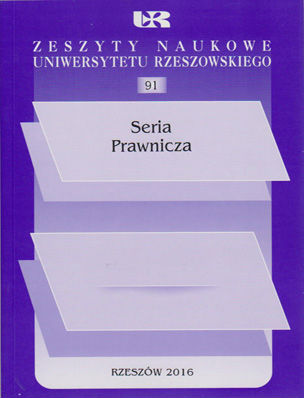ZMIANA FORMY RZĄDU W NAJNOWSZEJ KONSTYTUCJI FINLANDII
THE CHANGE OF THE FORM OF GOVERNMENT IN THE NEWEST CONSTITUTION OF FINLAND
Author(s): Viktoriya SerzhanovaSubject(s): Law, Constitution, Jurisprudence, Constitutional Law
Published by: Wydawnictwo Uniwersytetu Rzeszowskiego
Keywords: Finland; constitution;
Summary/Abstract: The paper is focused on a short analysis of the form of government which presently functions in Finland. It synthetically presents the new system of relations between the supreme state authorities, i.e. the parliament – Eduskunta and the government – State Council, as well as determines in this changed system a position of the head of state – the President of the Republic. Political system institutions of Finland are deeply rooted in the Nordic constitutionalism, especially in the Swedish one, because Finland was a constituent part of Sweden for over 500 years. However those institutions developed in a different way, creating original governmental and political mechanisms. It is also worth underlining that notwithstanding the Russian domination for over a hundred years Finland did not let it be russified and managed to cultivate its own traditions. It not only saved its separate political institutions but also introduced some new ones, based on the most democratic models of the epoch. According to the Eastern-Scandinavian Swedish and Finnish tradition the previous constitution of Finland was of a complex nature and included several basic laws dating from 1919 to 1951. After gaining independence in 1918 it introduced a semi-presidential form of government with a strong position of the President of the Republic. The constitutional reform of the 1990-s, which surprisingly finished with adopting of a new Basic Law from 11 June 1999 (came into force on 1 March 2000) seems to have changed that traditional for Finland model of political system by means of weakening the position of the President for the sake of strengthening the position of Eduskunta. Reflections comprised in the paper aim at proving the thesis that the Finnish form of government has been changed into a more parliamentary-governmental model.
Journal: Zeszyty Naukowe Uniwersytetu Rzeszowskiego - Seria Prawnicza
- Issue Year: 2011
- Issue No: 10
- Page Range: 181-195
- Page Count: 15
- Language: Polish

